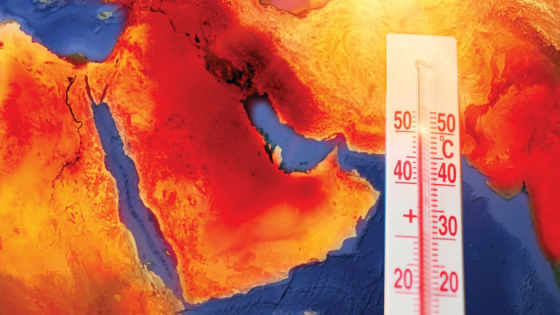Contents
The UAE has a very high per capita carbon footprint due to its oil and gas-based economy and hot climate requiring extensive use of air conditioning. Estimates put the UAE’s per capita footprint at over 20 tons of CO2 equivalent per year.
What is the UAE carbon footprint?
The UAE carbon footprint refers to the total amount of greenhouse gas emissions generated directly and indirectly by human activities within the United Arab Emirates.
Major sources of emissions include electricity production (mostly from natural gas), transportation, industrial processes, and buildings/commercial facilities relying heavily on air conditioning.
Reasons for the UAE carbon footprint

It is a massive and real problem, and it has many reasons. Here are the most important 5 reasons:
- The UAE makes most of its emissions from electricity, mostly from natural gas power plants.
- The extensive use of air conditioning significantly influences electricity consumption.
- Transportation is another big cause of pollution because more people live in cities and use cars a lot. This has caused more pollution from cars in the last few decades. The UAE has one of the highest vehicle ownership rates in the world.
- Industrial activities like oil and gas extraction, petrochemical production, and manufacturing contribute meaningfully to the carbon footprint. The UAE’s economy remains heavily dependent on fossil fuel production and exports.
- Domestic and commercial buildings also account for a sizable portion due to widespread use of energy-intensive cooling in hot conditions. Buildings lack proper insulation in many cases.
- The UAE has committed to achieving net-zero emissions by 2050, and reducing its carbon footprint is a key national priority. Strategies focus on low-carbon energy generation, sustainable transportation, green buildings and investments in renewables.
Making major reductions remains challenging given the economic structure and climate. Stronger policies and infrastructure changes will be needed to transition to cleaner energy sources and technologies.
Read more about: UAE challenges
UAE Carbon footprint ranking

the UAE Carbon footprint ranking compared to other countries:
- The UAE Carbon footprint is one of the highest per capita in the world. Various studies and estimates have ranked its per capita emissions:
- In the top 5-10 globally according to the World Bank.
- 7th highest out of more than 200 countries according to Data Reportal (2022).
- 8th highest in the world according to Global Carbon Atlas (2019 data).
- 11th highest per capita according to Climate Watch (2019 data).
In terms of total national carbon footprint:
- The UAE’s total CO2 emissions were approximately 249 million tons in 2019, according to the IEA.
- This makes it one of the top 30 largest carbon emitting countries globally by total volume.
- However, its emissions are relatively small compared to major economies like China, US, India, Russia due to its small population.
- Within the Middle East, the UAE Carbon footprint is one of the highest total after countries like Saudi Arabia and Iran which have larger economies and populations.
Its per capita emissions far exceed regional and global averages, making it a high contributor on a per person basis.
Also for you: UAE mineral resources
UAE Carbon footprint calculator
Here are some options for calculating the UAE Carbon footprint:
- Dubai Carbon: This official calculator from Dubai Carbon Centre of Excellence allows calculating the carbon footprint of activities conducted in Dubai. It covers household, transportation, leisure activities, etc.
- UAE Carbon Calculator: Developed by environmental consultants, this tool calculates the carbon footprint of UAE residents based on factors like living type, transportation, shopping habits, etc.
- Emirates Nature Carbon Calculator: Operated by Emirates Nature conservation group, this is a simple individual carbon footprint calculator for UAE residents.
- Carbon Footprint: This free online calculator from the environmental charity allows inputting UAE-specific data to estimate the annual carbon footprint for things like travel, food, goods.
- Eco Calculator: Provided by non-profit Eco Multimedia, this carbon calculator covers transportation, housing, goods, food etc. Specific UAE data can be used.
- Individual Calculator: Endorsed by the UN, this tool requires input of lifestyle parameters to estimate one’s footprint in the UAE context.
- Organizational Carbon Calculator: For firms, this tool by Ahalia provides an inventory of Scope 1, 2 and 3 emissions sources common to UAE companies.
- IEA Data: The International Energy Agency maintains national carbon footprint data for the UAE which can indicate trends over time based on energy and industry stats.
These are some reputed online carbon footprint calculators tailored to estimate emissions from lifestyles and activities within the UAE.
Why does the UAE have such a high carbon footprint?
There are several key reasons why the UAE has such a high carbon footprint:
Oil and gas economy: As a major oil and gas producer, the energy sector is a significant source of emissions.
Hot climate: Widespread use of air conditioning drives huge electricity demand to cope with summer temperatures over 40°C.
Urban sprawl: Rapid urbanization and infrastructure expansion have encouraged car dependency with low-density suburban development. Transportation emissions are high.
Cheap energy: Fossil fuels are abundantly and cheaply available, leading to wasteful consumption patterns without incentives to conserve energy or adopt renewables.
Lifestyle patterns: High incomes enable an energy-intensive lifestyle of large homes/villas, private vehicle ownership, leisure activities like golf requiring AC/machinery.
Population growth: The population has more than tripled since 2000 to over 10 million, further increasing emissions from construction, services and consumption.
Limited carbon policies: Fuel subsidies and lack of carbon pricing or strict efficiency standards have slowed the transition to a low-carbon economy.
What is the average of the UAE Carbon footprint?
The average carbon footprint per person in the UAE is estimated to be around 20-23 metric tons of CO2 equivalent per year.
The World Bank estimates the UAE’s per capita carbon emissions at 22.8 tons of CO2 in 2018.
According to the Global Carbon Project, the UAE’s per capita emissions were 20.6 tons in 2017.
Emirates Nature estimates the typical carbon footprint of a UAE resident is 21 tons per year.
Other studies have placed the average annual carbon footprint of an individual in the UAE between 20-23 tons of CO2e
What is the ranking of the UAE in carbon emissions?
The UAE typically ranks within the top 5-10 countries globally for carbon emissions per person, estimated at over 20 tons of CO2 annually.













